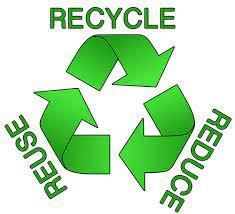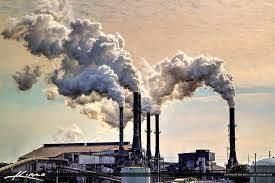Mineral Resources - 2 Class 4 Worksheet SST
Q1: Fill in the Blanks.
(i) The materials that come up from under the Earth's surface are called __________.
Ans: minerals Minerals are naturally occurring substances found beneath the Earth's surface. They are solid, inorganic, and have a crystalline structure. These materials are extracted from mines and quarries for various purposes, including industrial and commercial use.
Minerals are naturally occurring substances found beneath the Earth's surface. They are solid, inorganic, and have a crystalline structure. These materials are extracted from mines and quarries for various purposes, including industrial and commercial use.
(ii) Deep holes dug in the ground to bring up materials are known as __________.
Ans: mines Mines are excavations or pits in the Earth's surface where valuable minerals, ores, or other geological materials are extracted. These deep holes are created to access and recover these materials, which can include metals, coal, gemstones, and more.
Mines are excavations or pits in the Earth's surface where valuable minerals, ores, or other geological materials are extracted. These deep holes are created to access and recover these materials, which can include metals, coal, gemstones, and more.
(iii) Copper is used in making __________.
Ans: electric wires Copper is an excellent conductor of electricity. Due to its high electrical conductivity and malleability, it is widely used in the manufacturing of electric wires and cables. These wires efficiently transmit electrical energy, making them a crucial component in electrical systems.
Copper is an excellent conductor of electricity. Due to its high electrical conductivity and malleability, it is widely used in the manufacturing of electric wires and cables. These wires efficiently transmit electrical energy, making them a crucial component in electrical systems.
(iv) Steel plants have been set up in cities like __________, Bhilai, Rourkela, and Durgapur.
Ans: Jamshedpur
These cities are known for their steel plants because they are strategically located near sources of raw materials like iron ore, coal, and other resources necessary for steel production. For example, Jamshedpur is home to Tata Steel, one of India's largest steel manufacturers.
(v) The first metal discovered by humans was __________.
Ans: copper Copper is considered one of the first metals to be used by humans in ancient civilizations due to its malleability and ease of smelting. It played a crucial role in the development of early metallurgy and tool-making.
Copper is considered one of the first metals to be used by humans in ancient civilizations due to its malleability and ease of smelting. It played a crucial role in the development of early metallurgy and tool-making.
(vi) __________ is used as a domestic fuel.
Ans: Liquid Petroleum gas
LPG is a commonly used domestic fuel for cooking and heating in many households worldwide. It is a clean-burning fuel derived from petroleum refining and is stored as a pressurized liquid in cylinders for easy use.
(vii) Wind power and __________ offer good substitutes for traditional energy sources.
Ans: solar energy
Wind power and solar energy are considered renewable and environmentally friendly sources of energy. They are considered substitutes for traditional fossil fuels like coal, oil, and natural gas because they can generate electricity without emitting greenhouse gases, reducing the environmental impact of energy production.
(viii) __________ and petrol are some of the products obtained from refining petroleum.
Ans: Kerosene and petrol Petroleum refining is a complex process that separates crude oil into various products, including gasoline (petrol), kerosene, diesel, and more. These products are then used as fuels for transportation, heating, and other industrial applications.
Petroleum refining is a complex process that separates crude oil into various products, including gasoline (petrol), kerosene, diesel, and more. These products are then used as fuels for transportation, heating, and other industrial applications.
(ix) One way to conserve minerals is by avoiding __________.
Ans: wastage Conserving minerals involves using them efficiently and reducing unnecessary waste. This can be achieved by recycling, reusing, and reducing consumption, as well as implementing responsible mining practices.
Conserving minerals involves using them efficiently and reducing unnecessary waste. This can be achieved by recycling, reusing, and reducing consumption, as well as implementing responsible mining practices.
(x) Scientists are working to make __________ cells cheaper for converting solar energy.
Ans: solar Researchers are continually working on improving the efficiency and reducing the cost of solar cells and panels to make solar energy more accessible and cost-effective for widespread use as an alternative energy source. This can help accelerate the transition from fossil fuels to renewable energy.
Researchers are continually working on improving the efficiency and reducing the cost of solar cells and panels to make solar energy more accessible and cost-effective for widespread use as an alternative energy source. This can help accelerate the transition from fossil fuels to renewable energy.
Q2: Multiple Choice Questions (MCQs).
(i) What are the deep holes dug to bring up materials from beneath the Earth's surface called?
(a) Tunnels
(b) Caves
(c) Mines
(d) Wells
Ans: (c) Deep holes dug in the ground to bring up materials are called mines.
Deep holes dug in the ground to bring up materials are called mines.
(ii) Which metal is used in making electric wires?
(a) Aluminium
(b) Iron
(c) Copper
(d) Gold
Ans: (c)
Copper is used in making electric wires.
(iii) Which state is NOT mentioned as a place where large quantities of iron ore are found?
(a) Odisha
(b) Madhya Pradesh
(c) Gujarat
(d) Bihar
Ans: (c)
Gujarat is not mentioned as a state where large quantities of iron ore are found.
(iv) Which energy sources are causing problems of air pollution?
(a) Wind power and solar energy
(b) Coal and petroleum
(c) Hydroelectric power
(d) Natural gas and biomass
Ans: (b)
Coal and petroleum are causing problems of air pollution.
(v) Which of the following is an alternative source of energy?
(a) Oil
(b) Coal
(c) Natural gas
(d) Solar power
Ans: (d)
Solar power is an alternative source of energy.
Q3: True and False.
(a) Minerals are only found on the Earth's surface.
Ans: False
Minerals can also be found buried deep under the ground.
(b) The materials that come up from under the Earth are known as ores.
Ans: False
The materials that come up from under the Earth are called minerals, while ores are specific types of minerals.
(c) Copper is used in making aircraft bodies.
Ans: False
Copper is used in making electric wires, not aircraft bodies.
(d) Steel plants refine iron ore to make copper.
Ans: False
Steel plants refine iron ore to make steel, not copper.
(e) Petroleum products include kerosene, petrol, and diesel oil.
Ans: True
Kerosene, petrol, and diesel oil are some of the products obtained from refining petroleum.
Q4: Choose the Odd One Out.
(i) (a) Iron
(b) Aluminium
(c) Copper
(d) Gold
Ans: Gold Iron, aluminium, and copper are important metals used in various applications, while gold is primarily used for jewelry and as a store of value.
Iron, aluminium, and copper are important metals used in various applications, while gold is primarily used for jewelry and as a store of value.
(ii) (a) Tatanagar
(b) Bhilai
(c) Wind power
(d) Rourkela
Ans: Wind power Tatanagar, Bhilai, and Rourkela are industrial cities associated with steel plants, while wind power is an alternative source of energy.
Tatanagar, Bhilai, and Rourkela are industrial cities associated with steel plants, while wind power is an alternative source of energy.
(iii) (a) Coal
(b) Petroleum
(c) Solar energy
(d) Natural gas
Ans: Natural gas Coal, petroleum, and solar energy are energy sources, while natural gas is not mentioned in the context of energy sources.
Coal, petroleum, and solar energy are energy sources, while natural gas is not mentioned in the context of energy sources.
(iv) (a) Odisha
(b) Bihar
(c) Mumbai
(d) Madhya Pradesh
Ans: Mumbai
Mumbai is a city, while Odisha, Bihar, and Madhya Pradesh are states mentioned as places with large quantities of iron ore.
(v) (a) Refining
(b) Extracting
(c) Wasting
(d) Conserving
Ans: Wasting
Refining, extracting, and conserving are all related to the process of utilizing minerals, while wasting is the opposite and disrupts the resource cycle.
Q5: Short Answer Questions.
(i) What are mines and what is their purpose?
Ans: Mines are deep holes dug in the ground to bring up materials that are buried beneath the Earth's surface. The purpose of mines is to extract minerals and ores that can be refined to obtain valuable metals and resources.
(ii) Name three important metals obtained from mineral ores.
Ans: Three important metals obtained from mineral ores are iron, copper, and aluminium. Iron is used for making tools, machinery, and buildings. Copper is used in making electric wires, and aluminium is used for various purposes, including making aircraft bodies.
(iii) Where are steel plants set up in India and what do they do?
Ans: Steel plants are set up in cities like Jamshedpur (Tatanagar), Bhilai, Rourkela, and Durgapur. These plants refine iron ore to produce steel. Steel is a vital material used in construction, manufacturing, and various industries.
(iv) How is petroleum obtained and what are some of its uses?
Ans: Petroleum is obtained from oil wells beneath the Earth's surface. It is a mixture of various hydrocarbons. Petroleum is refined in large refineries to obtain products like kerosene, petrol, diesel oil, grease, and paraffin wax. These products have multiple uses, from fuels to lubricants.
(v) Why is it important to conserve minerals, and what are some ways to do so?
Ans: It is important to conserve minerals because they are finite resources that will eventually be depleted. Conservation ensures that future generations can also benefit from these resources. Ways to conserve minerals include avoiding wastage, recycling materials, and researching alternative sources of energy.
|
49 videos|177 docs|46 tests
|
FAQs on Mineral Resources - 2 Class 4 Worksheet SST
| 1. What are mineral resources? |  |
| 2. How are mineral resources formed? |  |
| 3. What are the different types of mineral resources? |  |
| 4. How are mineral resources used? |  |
| 5. What are the environmental impacts of mining mineral resources? |  |





















